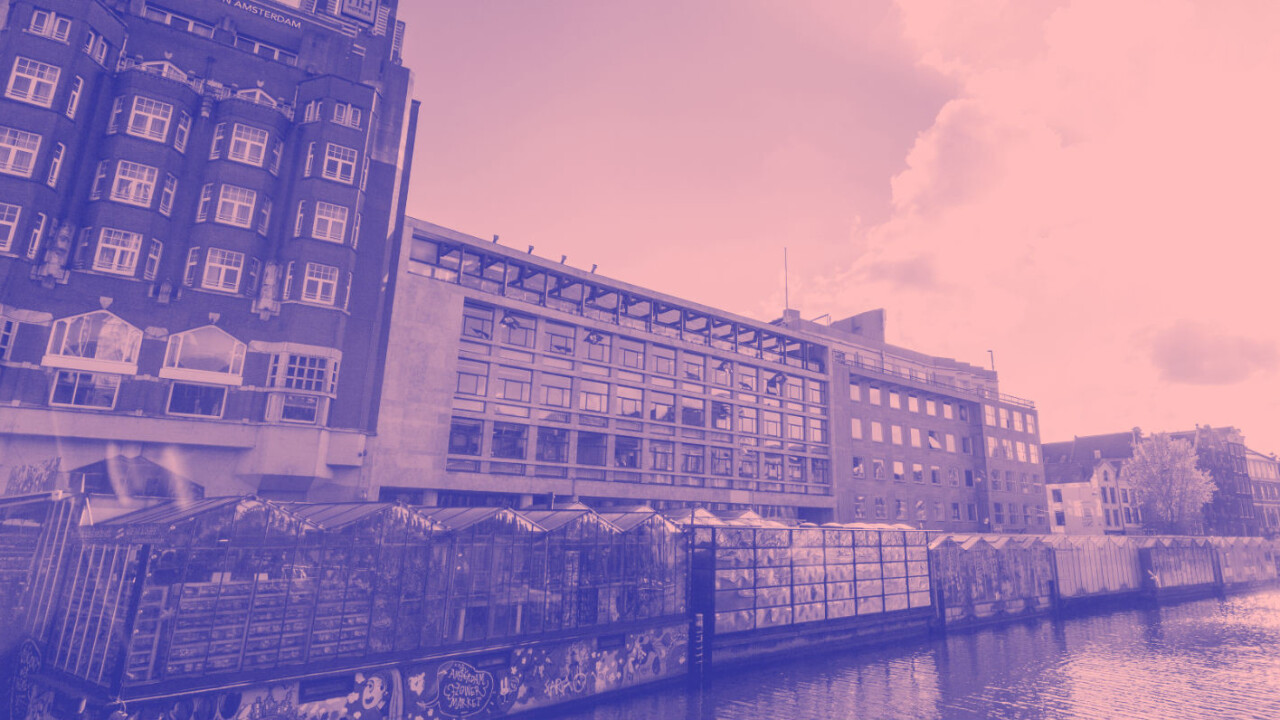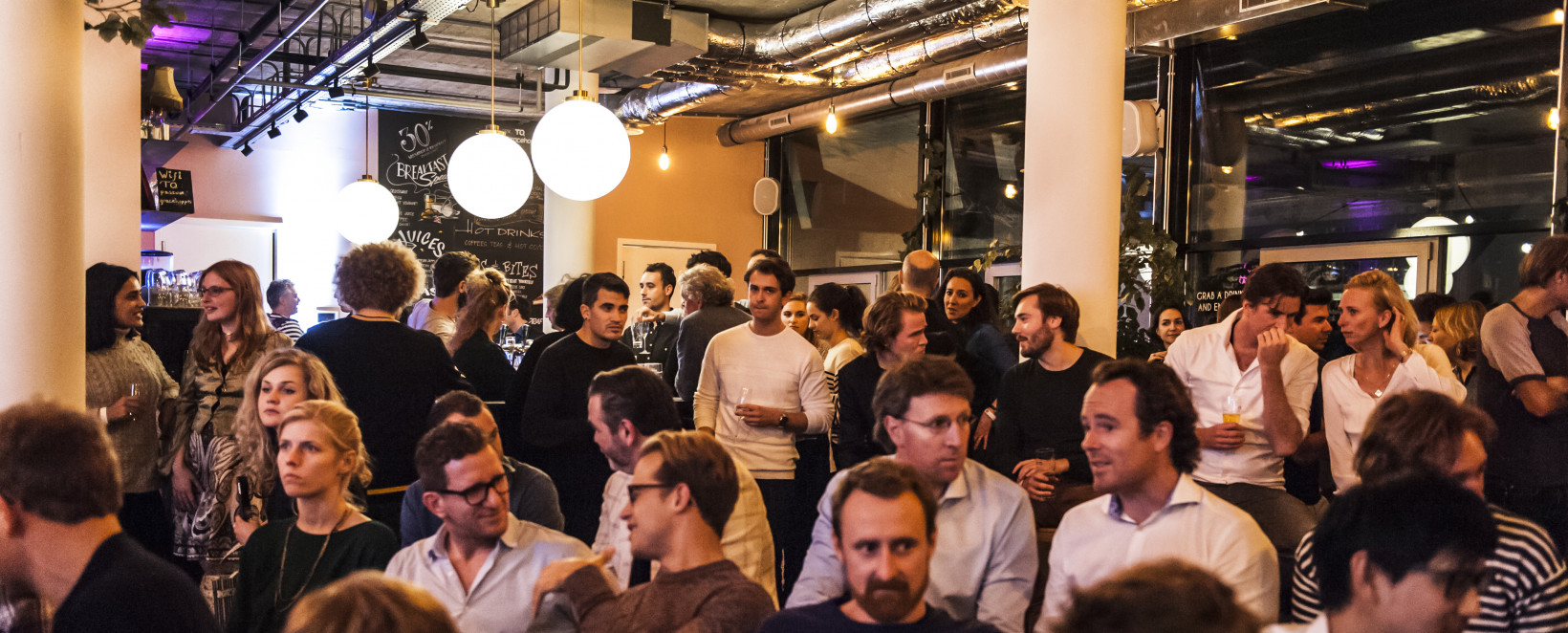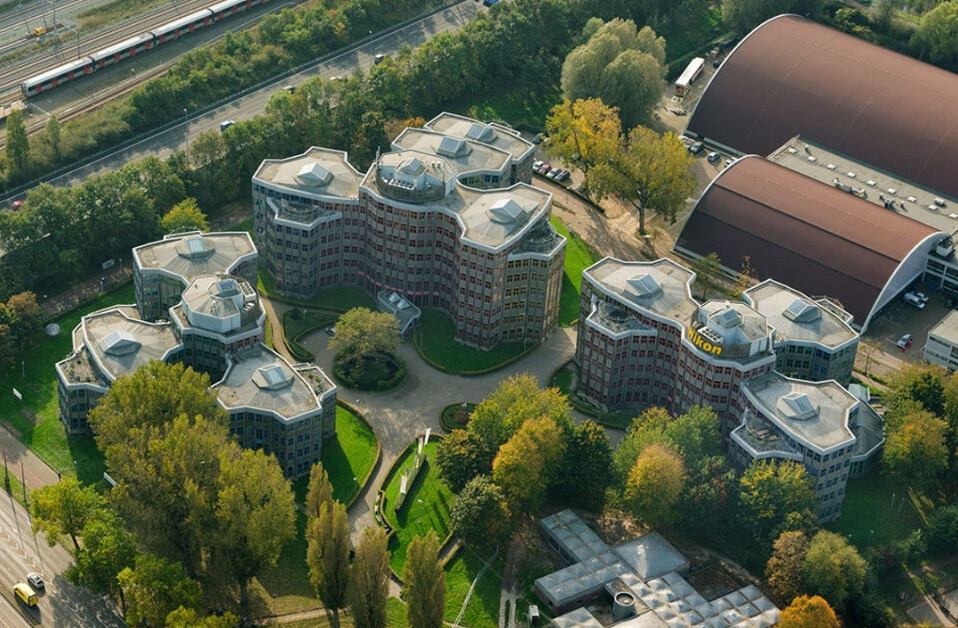
In 2016 we opened the doors of TQ, our curated tech hub in the heart of Amsterdam. In November 2017 we had welcomed over 187 companies, 529 residents and 67 startup founders, 165 members that shared desks, 18,774 visitors, and 261 events. A year after its launch, we still have a lot to prove, but we’re on our way.
Why did we start a tech hub?
10 years before I quit my job in Silicon Valley to run TQ as its Managing Director, I had shared an office with TNW in the Post CS building in Amsterdam. The building, which has now been demolished, used to house a weird collection of creative companies and startups, a way to keep squatters out of the decaying building.
Despite the fact that the windows didn’t close properly, the floors were always dirty, the heating barely worked, and the weird smell in the hallways never went away – we truly felt it was “our” space. I often look back to that time with great nostalgia and luckily, so did TNW. We wanted to create our own startup facilities, with a strong and curated community. And before we knew it, TQ had become a reality.
We’ve learned a lot along the way about the nature of scaling a company and building a community, that I’d love to share here.
1. Real estate isn’t software
I had done my fair share of product management at Google. Engineers had thrown me under the bus, designers had forgotten about my deadlines, and directors chewed out my requirements. I already had scars from herding cats so I was ready for anything that would be thrown at me… or so I thought.
Welcome to the world of real estate, where the rules don’t apply and everyone does their own thing!
People will tell you they screwed up because “the plan said so.” They will ignore you because you’re “not their boss.” They’ll make jokes about you behind your back, sometimes crude. Deal with it. Just don’t accept it.
What saved us, in the end, was hiring from the other side of the aisle, which minimized the friction between teams. We worked with a fantastic team of architects, vendors, and managers that helped us navigate the incredibly challenging world of real estate. I’m very grateful to have worked with them.
For any industry that you’re reinventing, it’s important not to accept a compromise just because you’re not familiar with it. Fight for what you think is right and recruit the people that can help your vision become a reality.
2. Give community a code
Startups start in isolation, alone in a garage, or an attic. When a startup grows, that isolation doesn’t work anymore. You need a community to attract talent, learn from your mistakes, find more customers, and to expand internationally. So we built a curated community with shared values.
The first step is to put those values down on paper like we did in our Code of Conduct. It’s the first page of our community manual that everyone receives when they join our community. If there was ever a dispute with a resident or an improvement we were unsure about, we looked through the code and acted accordingly.
We recently revised our Code of Conduct by holding a town hall event with volunteers from our community. They gathered feedback for us, listened to our future plans, and together we tried to improve on what we’ve built. It’s a living collaborative document that improves over time and has really become a cornerstone of how we figure out and strengthen our community.

3. Balance culture with content
The best way to build a community is by creating a cohesive events program. Ironically, most of the magic of a tech hub happens offline. We’ve done hundreds of events over the last year and the one thing that stuck with me is this:
You have to combine culture with content.
We’ve organized a talk on the history and future of mobile design, ethical algorithms, and many other deeply technical things. Dozens of experts shared their knowledge during weekly office hours and when Eric Schmidt came by to talk to our community, it was a great moment to bring everyone together around a great speaker sharing his vision of the future. These types of talks provide startups with real experience from experts who’ve been where they are right now.
But often we’d forget about the events in between, where people have gotten to know each other outside of professional interest, there’s a mutual relationship that develops over time. So we also made sure that we organized an event around the Pride Festival, celebrated holidays together, held ping-pong tournaments, and morning yoga classes. Those events need to be as diverse as your community to hit the interest of everyone involved.
4. Improve inside by looking outside
We send out regular surveys to our residents to learn about what we can improve. In the first one we ever sent, one thing became obvious:
Our kitchen sucks.
People always ran out of cups, it wasn’t cozy enough, it was always messy, and so on and so on.
At first, we tried to think of how we could improve something as basic as a kitchen. Should we just act on our impulse and try to improve it right away? Well, no.
Instead, we went on a field trip. We visited local offices of big startups and tech companies all over town. Booking.com, Uber, and many others opened their doors for us. We then selected the things that were most fitting and added them to our kitchen. In our case, it was just a small selection of better garbage bins, dishwasher racks, and glasswork.
The next survey, the results were in: everybody’s favorite thing in our facilities was the kitchen.
This doesn’t apply just to your facilities though. It taught us that it’s easy to be focused on your team, your own problems, and forget to look at other examples. But you need to get outside of your company to really do it better.
5. Always explain “why” first
When you provide a service, it’s quite likely you’ll change that service somewhere down the line. Not everyone will love it. If you change the rules too much, they might even call you out on your bullshit. Facebook learned that the hard way.
I definitely think that Facebook’s changes would’ve been better received if it had explained, in detail, why they were being made. At least putting more effort into explaining the “why” completely changed the way we talked to our community. We stopped saying how we would change things and focused on explaining why we were doing it. Sound familiar, Simon Sinek?
Now we communicate any changes (big or small) to our services by explaining first why we’re changing it — which makes sense because there’s always a good reason. It might be because the current solution for a dozen residents doesn’t scale to hundreds of residents. It might be because it’s too expensive to keep it going. But whatever it is, we’re completely clear on why it has to change, before we tell you about the change.
I make a point of doing this in my personal life too, and it’s a great way to avoid miscommunication.
The future of work
Having worked in Silicon Valley, New York, and Amsterdam, there’s one thing I know for sure:
Nobody does their best work in a secluded campus, surrounded by parking lots, on the outskirts of town, with all the free snacks and free haircuts and free whatever you can get. That isolation might keep you inside your company’s building, working ceaselessly on your projects. But to grow, you have to go (gasp!) outside. Nobody can evolve without a community; a network of people that supports their growth.
In one year’s time, we’ve certainly seen the positive effects of that new way of working. If you’re thinking of coming on board, I hope our experiences will be the push you need to make it happen. It’ll be worth it.
This article was originally published on TQ.
Get the TNW newsletter
Get the most important tech news in your inbox each week.




